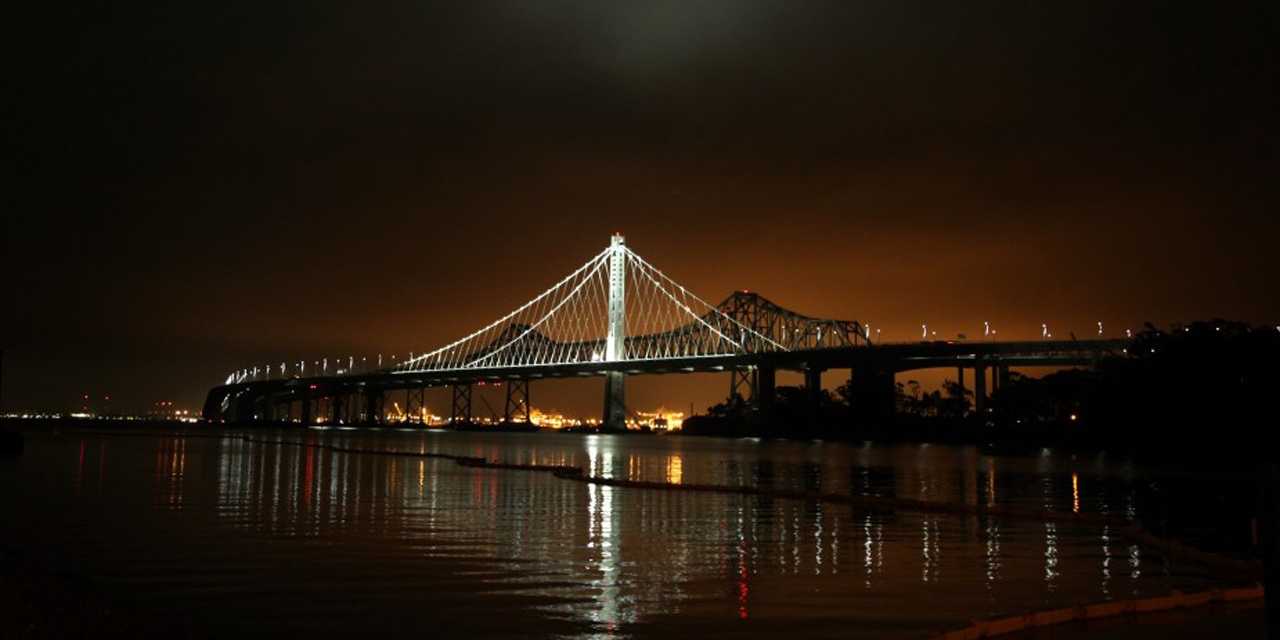Vehicles will begin streaming across the second and final span of the new $1.5 billion Goethals Bridge on Monday. The bridge, which carries about 90,000 vehicles each day over a tidal strait between Elizabeth, N.J., and Staten Island, N.Y., is on schedule to be completed on time and within budget, according to the Port Authority of New York and New Jersey.
Once the finishing touches-such as lane painting and removal of the old bridge-are comlpeted later this year, it will mark a rare win for the Port Authirty, an agency that has been criticized for delays and overspending on other projects. Port Authority Executive Director Rick Cotton said Thursday that the new bridge would double road capacity on a busy trucking route close to a major airport and seaports around Newark. The first span opened last summer.
"It will bring huge new benefits to the traffic between New York and New Jersey," Mr. Cotton added.
Tolls on the bridge, which are $15 cash for eastbound cars, will remain unchanged.
The Goethals Bridge continues a trend of replacement bridges changing the skyline across the region. Gone are the hulking steel frames of the old cantilever and truss bridges, such as the original Goethals, Tappan Zee, and Kosciuszko, which have been replaced by the elegant lines of cable-stayed bridges.
The new Goethals Bridge is squatter than its neighbors, as designers had to keep its towers lower than normal for a bridge its size because of its proximity to Newwark Liberty International Airport.
New Jersey Gov. Phil Murphy said: "The completion and opening of the second span of the Goethals Bridge project represents one of the most important infrastructure enhancements undertaken in the New Jersey-New York metro region in more than eight decades."
The bridge will be the first new span built by the Port AUthority since the George Washington Bridge opened in 1931.
The original Goethals Bridge, opened in 1928, provided ample room for Ford's Model T. But in recent decades, its four 10-foot-wide lanes were too narrow and too crowded with trucks to allow most drivers to pass one another. The bridge also had no shoulder, forcing the Port Authority to stop traffic in both directions when emergency vehicles responded to crashes. The new bridge has six 12-foot-wide lanes as well as two inner 5-foot shoulders and two outer 12-foot shoulders.
The Port Authority covered $500 million of the costs for the bridge. The remainder was financed by developer NYNJ Link, a joint venture led by Australian investment bank Macquarie Group LTd. NYNJ Link was responsible for the design and construction. For the next 35 years, the Port Authority will lease the bridge back from the developer for about $60 million a year, plus $7 million annually toward the bridge's maintenance.
At the end of the contract, the developer will return the bridge to the Port Authority.
Por Authority officials said that the funding mechanism was invaluable for an agency that is having to renovate many of the region's major transportation assets, such as bridges and tunnels, that opened more than 50 years ago.


